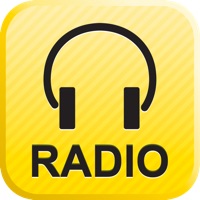6 detalles sobre MusiKraken
1. Make music using device sensors like Touch, Accelerometer, Microphone and Camera (face, hand, body joint and color tracking and depth sensor support), or connected devices like Game Controllers or an Apple Watch.
2. -TrueDepth: Use the depth signal of your camera to generate MIDI data by moving your hand (or anything else) in front of the device.
3. -ARKit Face Tracking: Uses the TrueDepth camera to generate notes or control parameters using your mouth, eyes, tongue or by moving your head.
4. Important: Please note that some of the modules only work on iOS devices with specific hardware: ARKit Face Tracking and the TrueDepth module need a TrueDepth front camera, and Hand and Body Joint Tracking needs at least iOS 14, and might be too slow on older devices.
5. -Hand Tracking: Uses the camera to convert your hand position and simple hand gestures to MIDI.
6. The app only uses sensor data to generate MIDI events.
Cómo configurar MusiKraken APK:
Los archivos APK (Android Package Kit) son los archivos sin procesar de una aplicación de Android. Aprende a instalar musikraken.apk archivo en tu teléfono en 4 sencillos pasos:
- Descargue musikraken.apk en su dispositivo usando cualquiera de nuestros espejos de descarga.
- Permitir aplicaciones de terceros (que no sean Play Store) en su dispositivo: vaya al menú » Ajustes » Seguridad » . Haga clic en "Fuentes desconocidas". se le pedirá que permita que su navegador o administrador de archivos instale APK.
- Ubique el archivo musikraken.apk y haga clic en Instalar: lea todas las indicaciones en pantalla y haga clic en "Sí" o "No" según corresponda.
- Después de la instalación, la aplicación MusiKraken aparecerá en la pantalla de inicio de su dispositivo.
¿Es MusiKraken APK seguro?
Sí. Proporcionamos algunos de los espejos de descarga de Apk más seguros para obtener el apk MusiKraken.



